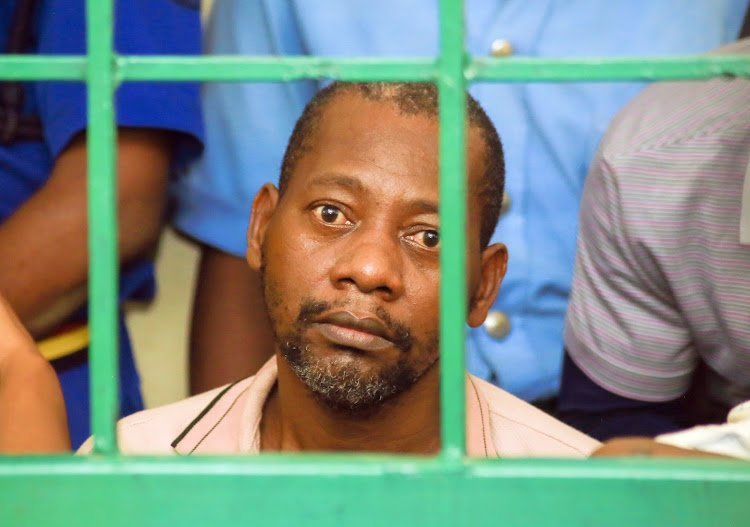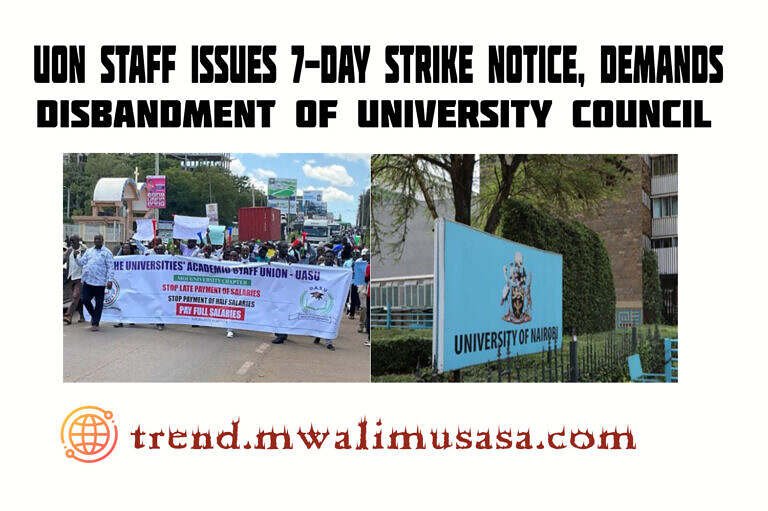
Introduction to the Shakahola Incident
The Shakahola incident refers to a tragic event that unfolded in a remote area near the coastal region of Kilifi County, Kenya, in 2023. This incident gained significant media attention following the discovery of mass graves linked to a local pastor and his controversial religious sect. The events transpired on a vast expanse of land known for its serene landscapes, contrasting sharply with the grim findings that emerged. Here, numerous individuals were reported missing or unaccounted for, revealing a complex interplay of faith, manipulation, and extreme beliefs.
As investigations began, authorities unearthed alarming evidence suggesting that several adherents of the faith-based group had succumbed to starvation in pursuit of spiritual enlightenment. The pastor, who became a central figure in this controversy, allegedly preached about the need to forsake earthly needs in favor of a spiritual awakening, leading many followers to extreme measures. The claims surrounding the incidents raised serious questions regarding the accountability of religious rhetoric and its implications for human rights, particularly the rights of vulnerable populations susceptible to exploitation.
Moreover, the situation was complicated by the socioeconomic dynamics of the region, where poverty and lack of access to reliable information often made residents susceptible to harmful ideologies. The Kenya National Commission on Human Rights (KNCHR) has expressed grave concerns over the human rights implications of the Shakahola incident, emphasizing the need for a thorough investigation into the events that transpired, ensuring justice for not only the deceased but also for the families left behind. There remains a critical need to address the systemic issues that allow such tragedies to occur, safeguarding individuals from coercive practices masked as religious freedom.
The Role of the Kenyan National Commission on Human Rights (KNCHR)
The Kenyan National Commission on Human Rights (KNCHR) is an independent institution that plays a crucial role in promoting and protecting human rights in Kenya. Established under the Kenya National Commission on Human Rights Act, the commission is tasked with monitoring, investigating, and addressing human rights violations across the nation. Its mission is not only to uphold the rights and dignity of individuals but also to promote the rule of law and democracy in the country. The KNCHR is mandated to advocate for human rights issues in various contexts, including but not limited to social justice, political rights, and the rights of marginalized communities.
In the aftermath of the Shakahola incident, the KNCHR has assumed a pivotal role in addressing the rights of the unaccounted individuals affected by this tragedy. The commission’s involvement has included conducting investigations into reported violations and advocating for the protection of the rights of victims and their families. By mobilizing resources and expertise, the KNCHR aims to ensure that every person impacted by the Shakahola event receives due attention and support, highlighting their right to life, dignity, and justice.
Furthermore, the KNCHR has worked closely with other governmental and non-governmental organizations to facilitate comprehensive support services for the families affected by the Shakahola incident. This collaborative approach seeks to address various challenges, such as mental health concerns, social reintegration, and access to legal assistance. The commission’s advocacy for accountability remains consistent, emphasizing the need for thorough investigations that uphold human rights standards. Through these efforts, the KNCHR seeks to ensure that the lessons learned from the Shakahola incident inform future policies and practices, fostering a culture of human rights observance across the nation.
The Search for the Missing: Current Status
In the wake of the Shakahola incident, the search for over 600 individuals reported missing is a substantial undertaking, requiring collaboration among multiple stakeholders. The incident, which raised profound concerns regarding personal safety and accountability, has mobilized both governmental bodies and non-governmental organizations (NGOs) to implement comprehensive search efforts. The current status of these efforts reflects a coordinated response aimed at resolving the extremely challenging situation.
Government agencies, including local law enforcement and disaster response units, have established command centers in key areas surrounding Shakahola to facilitate search operations. These centers serve as coordination hubs, where information regarding missing persons is collected, and search strategies are designed. The agencies are utilizing advanced search techniques, including aerial surveillance and ground searches, to cover a vast area where individuals may be lost or hiding. There is an emphasis on conducting these searches in a sensitive manner, considering the potential psychological impact on affected families and communities.
In addition to state interventions, several NGOs are actively participating in the search. These organizations are focusing on providing support to the families of the missing, offering psychological assistance, and helping to disseminate information regarding the whereabouts of missing individuals. Furthermore, they are working in tandem with government efforts to create efficient communication lines between affected families and responders. Public awareness campaigns have also been established to encourage community involvement. Volunteers have been enlisted, and community members are encouraged to report any sightings or information regarding the missing.
As search operations continue, the situation remains fluid, with updates frequently emerging from the field. The collective aim of these endeavors is not only to locate and account for those missing but also to ensure that the rights and dignity of individuals affected by the incident are upheld throughout the process. Efforts to reunite families with their loved ones are paramount in this context, representing a critical step toward recovery and societal healing following a tragic event.
Human Rights Violations Linked to the Incident
The Shakahola incident has raised significant concerns regarding potential human rights violations. Central to this discussion is the implications of the missing persons scenario that has emerged from the events surrounding the incident. A primary human rights concern arises with regard to the right to life. The families of the missing individuals are faced with uncertainty and fear, as they grapple with the unknown status of their loved ones. This situation not only affects the families physically and emotionally, but also poses a serious challenge to their mental health and overall well-being.
Moreover, the process of accountability and due process is a critical element that cannot be overlooked. In instances where individuals are unaccounted for, it is crucial that investigations are carried out thoroughly and transparently. The Kenyan National Commission on Human Rights (KNCHR) has emphasized the urgency of these issues, expressing concerns about the state’s responsibility to uphold the rights of individuals, including the right to be informed about the fate of their family members. The right to life, which is enshrined in various international human rights frameworks, remains fundamentally violated in situations where individuals simply vanish without a trace.
Additionally, the psychological impact on the families of the missing individuals cannot be understated. The uncertainty and grief associated with the absence of loved ones can lead to prolonged distress and mental health challenges. Families are left to navigate a labyrinth of emotional turmoil, seeking clarification and closure, which may not be forthcoming. The KNCHR’s statements bring to light the broader implications of these violations, calling for heightened awareness and action to protect the rights of the individuals affected by the Shakahola incident. Addressing these human rights violations is not only a legal obligation but also a moral imperative to ensure justice and healing for the impacted families.
Impact on Families and Community Reaction
The Shakahola incident has profoundly affected the families of the unaccounted individuals, leading to tremendous emotional and psychological strain. Families find themselves engulfed in a cycle of despair and uncertainty as they await information on the fate of their loved ones. The anguish associated with not knowing is compounded by the trauma of the revelations surrounding the incident, leaving family members grappling with feelings of guilt, anger, and helplessness. Support systems play a crucial role during this harrowing time, as relatives seek solace in one another in a collective mourning process.
Community reaction has been significant, showcasing both solidarity and the need for healing. Local groups and organizations have emerged, attempting to provide mental health resources, counseling, and support—a vital lifeline for the distressed families. One such initiative has been the establishment of grief support groups, where families can come together to share their experiences, fears, and hopes. The importance of these gatherings cannot be understated; they allow individuals to process their emotions in a safe environment while fostering a sense of community. Many have voiced how these interactions help diminish the isolation they feel as they navigate this crisis.
Testimonials captured during this challenging time reveal profound sorrow mixed with resilience. One mother shared her struggle, saying, “Every day feels like a lifetime; I just want to understand where my son is.” Another family member poignantly reflected, “This tragedy has united us in ways we never imagined, but we still face shadows of uncertainty.” As the community continues to grapple with the aftermath of the Shakahola incident, individuals rely on shared experiences and collective healing efforts, demonstrating the human capacity for support amidst profound loss. The emotional impact resonates deeply, shaping both personal and communal narratives as families cope with their new reality.
Policy Implications and Recommendations
The Shakahola incident has prompted critical examination of existing policies concerning human rights protection and accountability in times of crisis. The findings reported by the Kenya National Commission on Human Rights (KNCHR) highlight significant gaps in the state’s ability to safeguard vulnerable populations. Such shortcomings necessitate robust policy reform to ensure that similar situations are managed more effectively in the future.
One of the primary recommendations is the establishment of comprehensive early warning systems. Governmental bodies and non-governmental organizations (NGOs) should collaborate to develop frameworks that detect early signs of potential human rights violations, particularly in communities at risk, like those affected by the Shakahola incident. These systems would prioritize timely interventions that can mitigate the risks faced by marginalized individuals, promoting a culture of vigilance and proactive engagement.
Furthermore, there is an urgent need for improved training and resources for law enforcement and local authorities. Providing educators and other community workers with adequate knowledge about human rights issues will empower them to recognize and address suspicious activities promptly. The lack of awareness or understanding amongst local leaders can lead to grave oversights, thus, integrating human rights education into their training programs is vital.
Additionally, strengthening oversight mechanisms is essential for holding organizations accountable, particularly those that operate in crisis situations. This can be achieved by instituting periodic audits and reviews of NGOs and societal organizations to evaluate their adherence to human rights standards. Transparent reporting practices must become commonplace, fostering a climate where accountability is prioritized.
In conclusion, the aftermath of the Shakahola incident calls for a multi-faceted approach to policy implications and recommendations, focusing on prevention, education, and accountability to safeguard human rights effectively. By investing in these areas, governmental and non-governmental entities can work collaboratively to prevent further tragedies and ensure that the rights of all individuals are respected and upheld.
The Role of Media in Raising Awareness
The Shakahola incident has brought significant attention to the issues surrounding unaccounted individuals and the importance of active media engagement. Both local and international media have been pivotal in raising awareness about the circumstances leading to the tragedy and its subsequent aftermath. The coverage of this incident has highlighted not only the personal stories of the missing individuals but also the broader societal implications of such events.
Media outlets have played a dual role in this context: informing the public while simultaneously advocating for systematic action. By reporting on the developments of the search efforts, media coverage has fostered a sense of urgency among local communities and prompted responses from authorities. The dissemination of information regarding the identities of missing persons has encouraged family members to come forward, ensuring that the search and rescue operations remain comprehensive and coordinated.
Furthermore, the media’s investigative reports have shed light on potential underlying issues, such as lapses in local governance and the societal factors that may contribute to individuals going missing. This has sparked discussions on preventative measures and highlighted the need for stronger support systems for vulnerable populations. The role of social media cannot be overlooked either; it has provided a platform for mass mobilization, where community members can share information and resources rapidly.
Internationally, media attention has also focused on the need for humanitarian responses and has raised questions about governmental accountability regarding the welfare of citizens. The Shakahola incident is not just a localized matter; it serves as a critical reminder of the responsibilities of stakeholders at all levels. Thus, the media’s role as a catalyst for awareness and action has been integral in the ongoing discourse concerning unaccounted individuals in this tragic scenario.
Legal Framework and Accountability
The Shakahola incident raises significant legal and ethical concerns, particularly regarding the accountability of individuals involved and the rights of the unaccounted individuals. The legal frameworks applicable to this situation encompass various areas, including laws governing missing persons, human rights legislation, and accountability protocols. These laws are crucial for ensuring that the state and relevant authorities take appropriate action to investigate the circumstances surrounding the missing individuals and hold any accountable parties responsible.
In many jurisdictions, there are established legal procedures for addressing cases of missing persons. These procedures may include reporting protocols for families and mechanisms for law enforcement to initiate investigations. Such laws typically stipulate a timeframe for initiating searches and investigations to ensure prompt action, which is vital in the aftermath of incidents like Shakahola. However, gaps often exist in these legal frameworks, especially in dealing with mass disappearances or when the missing individuals are linked to specific groups or communities.
Moreover, human rights laws offer protections for individuals still missing and their families, emphasizing the right to know the fate of loved ones. These frameworks advocate for the state’s responsibility to conduct thorough inquiries into disappearances, acknowledging the psychological and social impacts on families affected by such incidents. However, challenges persist in enforcing these rights, often due to a lack of resources or political will. Additionally, existing accountability mechanisms may fall short in providing justice for the victims and their families, leading to calls for reforms to ensure comprehensive protection and oversight.
As investigations into the Shakahola incident unfold, it is essential to critically evaluate the effectiveness of current laws and practices related to missing persons and the protection of human rights. Doing so may illuminate necessary improvements to legal frameworks and enhance accountability measures in the future.
Conclusion: Moving Forward and the Call for Justice
The Shakahola incident has profoundly impacted the local community and raised urgent concerns regarding the accountability of individuals and organizations involved. This tragic event revealed deep-rooted issues related to human rights violations and the need for rigorous oversight in religious and spiritual practices. As we reflect on the circumstances surrounding this incident, it becomes increasingly important to emphasize the need for justice for the unaccounted individuals and their families. The ongoing search efforts underscore the commitment to uncovering the truth and providing closure to those affected.
Moreover, the role of government agencies, civil society, and faith-based organizations is paramount in ensuring that such incidents do not recur. A collective advocacy approach is required to promote policies that safeguard individual rights and prevent exploitation under the guise of spiritual beliefs. By fostering dialogue among stakeholders, we can create an environment of transparency and accountability, essential for rebuilding trust within the affected communities.
It is imperative that the plight of the missing individuals and their families remains in the public eye. Continued support for the families is crucial as they navigate this challenging time, and their voices must be amplified in legislative discussions regarding protective measures for vulnerable groups. In essence, the Shakahola incident should serve as a catalyst for change, prompting society to advocate for stronger regulations and protective mechanisms that honor human dignity and safeguard against future abuses.
Ultimately, as we move forward from the aftermath of the Shakahola incident, the unwavering call for justice and the protection of human rights must remain at the forefront of our efforts. Together, through advocacy and action, we can strive for a future where such tragedies are prevented, ensuring a safer and equitable society for all.



